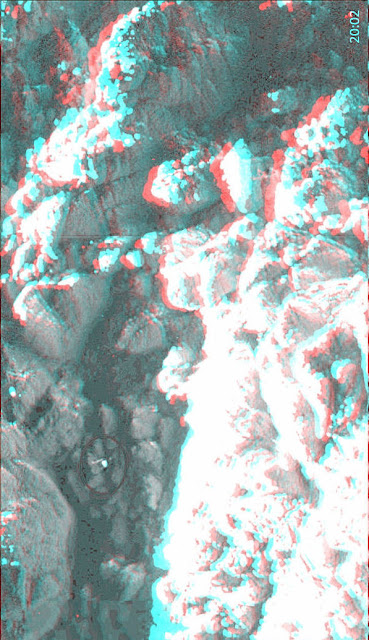May 25, 2025
Nov 3, 2024
Baily Beads Analysis for the solar eclipse 2024 Apr 08 in Stephenville TX
Comparison of Baily Beads Analysis in Occult 4 by David Herald and the predictions by the Besselian Elements team/John Irwin in JOA2024_4.pdf
following up SEML msg #33125 Oct. 09 2024
https://groups.io/g/SEML/message/33125
An
article we wrote on experimentally assessing eclipse maps accuracy has
recently been published in the Journal for Occultation Astronomy:
https://iota-es.de/JOA/JOA2024_4.pdf
Few
months ago we started a discussion on SEML about the subject: the
article presents further experimental data and it provides a more
thorough analysis of the matter. We hope it will contribute to the
appreciation of the subtle art of eclipse predictions and mapping.
Kind Regards, Luca Quaglia on behalf of the Besselian Elements Team
An insightful discussion of the TSE2024 in the northern graze zone - that paper is also most valuable in the comparison of various eclipse prediction/simulation tools.
How does Occult 4 fit in here?
I cross-checked the predictions by John Irvin of the Besselian Elements team using the paramaters given for the Stephenville, TX site and the published "eclipse solar radius" r=959.95".
I get 14 sec for the duration of totality within the accuracy of reading the graph to the nearest half-second which is essentially identical to 13.7 s in JOA2024_4.pdf.
The contact times C2 and C3 are approx. 1 sec earlier in Occult: C2=18:39:05.5, C3=18:39:19.5. than reported (18:39:06.6 and 18:39:20.3).
First of all this is quite comforting for users of Occult.
What might be the reason for the offset of 1 sec in time?
Occult uses the ephemeris DE435 while Besselian Elements/John Irwin use DE440, there might be other causes.
BTW it is essential to use the latest EOP (Earth orientation) parameters in Occult.
###
Sep 15, 2019
Harvest Full Moon rising
 |
| Stack of exposures between 20:25 and 20:44 CEST cropped |
 |
| uncropped |
 |
| Time-Lapse animated gif |
 |
| Composite full Moon 2019 Apr 19 and Sep 13 |
Composite full Moon 2019 Apr 19 and Sep 13 from the same location
Lunar distances
Apr 19 368474 km near perihelion
Sep 13 405759 km near aphelion
Jul 29, 2018
Total Lunar Eclipse 2018 July 27
 |
| Stack of 2 exposures at 21:49 and 22:05 CEST |
 |
| Stack of 6 exposures 22:18 CEST with plane track |
 |
| Stack of 6 exposures 22:18 CEST with plane track |
 |
| Stack of 7 exposures 22:11 - 22:34 CEST |
 |
| Animation 3 exp 21:18 - 21:20 CEST, 400mm lens |
Apr 1, 2018
Easter Full Moon rising
Aug 12, 2017
Partially eclipsed Moonrise
 |
| Composite of 5 images 21:09 - 22:02 CEST crop2000 |
 |
| crop 2000*3000 |
 |
| uncropped |
 |
| Animation f=400mm |
 |
| Animation Moonrise |
Dec 30, 2016
Closeup 3D views of Philae at it's landing site Abydos on comet 67P C-G
The Rosetta Osiris NAC images of May 25 2016, 19:58 and 20:02 as published on Sep 28, 2016 in The story behind finding Philae were first contrast adjusted to enhance detail in the shadow
Original image credits:
ESA/Rosetta/NAVCAM/OSIRIS – CC BY-SA IGO 3.0 Copyright
ESA/Rosetta//OSIRIS
- Original image provided as .IMG file in the archive delivery from : ESA/Rosetta/MPS for OSIRIS Team MPS/UPD/LAM/IAA/SSO/INTA/UPM/DASP/IDA
- Original image processed by ESA/Rosetta/SGS/PSA&ESDC to create image for Archive Image Browser
then combined in stereo anaglyphs (rotated 90 deg)
 |
| One of Philae's legs is seen leaning on to "Perihelion cliff" |
The ESA blog shows only the immediate surroundings of Philae, the whole Osiris image of May 25, 20:02 was presented at the Planetarium Stuttgart by K. Seidensticker on Dec 16, 2016
The resolution is 9.8 cm/pixel.
Here are the anaglyphs embedded in this context
In the formal discovery announcement of Sep. 05, 2016 a better resolved image from Sep. 02 is shown, however no stereo pair was captured.
 |
| Sep 02 w/ Philae left and a NAVCAM view on Aug. 06, 2016 |
On a Navcam image also from May 25, 2016 ROS_CAM1_20160525T200005F._P there is a bright spot at the location of Philae (arrow)
 |
| ROS_CAM1_20160525T200005F._P |
 |
| Stereo anaglyph from Navcam images May 25, 2016 |



















